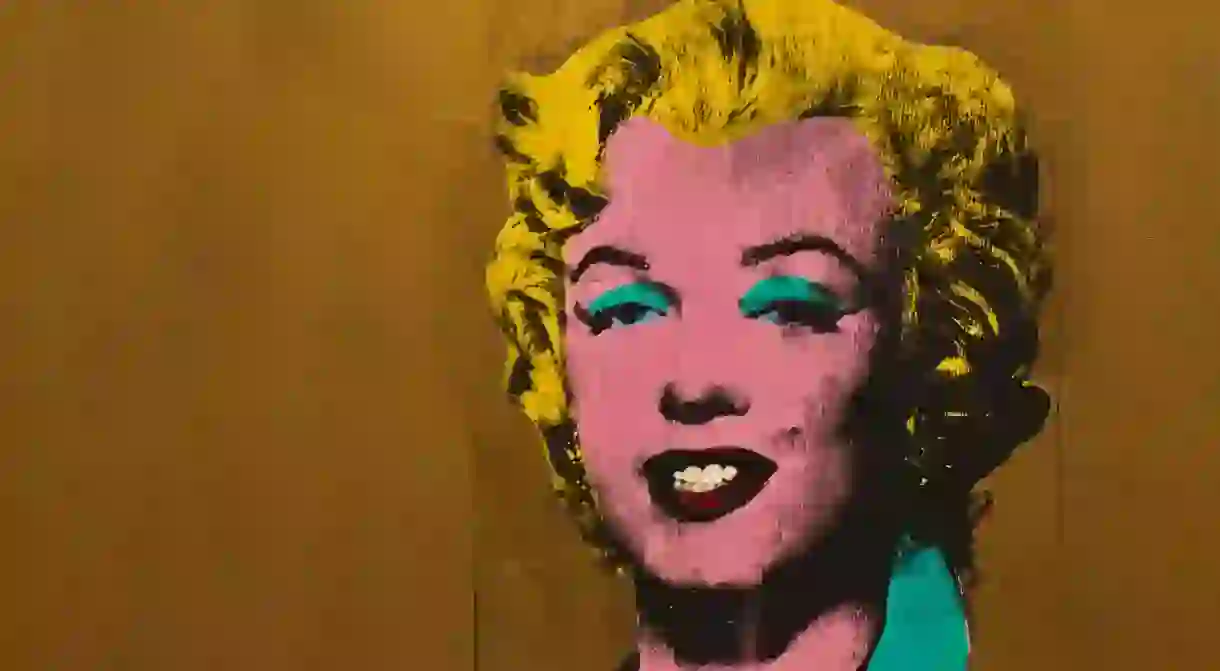Andy Warhol And His Artistic Influence

American Pop artist Andy Warhol was one of the most significant and prolific figures of his time, his works exploring the connection between celebrity culture and artistic expression. Warhol had already cemented his place in the art community early in his career, and bequeathed an international audience with an eccentric collection of some of history’s most vibrant works upon his untimely death in 1987. We take a closer look at the mysterious man behind some of the world’s most iconic works of art.
Andy Warhol was born to Slovakian parents in 1928 in Pittsburgh, Pennsylvania. When he was eight years old, he contracted Chorea (a neurological disease), which confined him to bed. To keep him entertained during his recovery, his mother gave him drawing lessons. Warhol developed a love for the medium, and he continued to draw in his spare time upon regaining his health. In 1942, Warhol enrolled at Schenley High School, and after graduating in 1945, he studied Commercial Art at the Carnegie Institute for Technology – now Carnegie Mellon University. He earned a Bachelor of Fine Arts in Pictorial Design in 1949.

Warhol went on to become an illustrator for Glamour magazine, which placed him as a leading figure in the 1950s Pop Art movement. His aesthetic was a unique convergence of fine art mediums such as photography and drawing with highly commercialized components revolving around household brand and celebrity names. Garnering international attention for his unique productions, Warhol loved to maintain an element of personal and professional mystery, admitting that he never discussed his background and would invent a new persona every time he was asked.
Warhol’s artworks introduced a fascinating new form of artistic expression. In 1961, he unveiled the concept of Pop Art and showcased a collection of paintings that focused on mass-produced commercial goods. In 1962, he exhibited his iconic paintings of Campbell’s soup cans. He went on to showcase works depicting hamburgers and Coca Cola bottles, alongside portraits of quirky celebrities such as Mick Jagger, Elizabeth Taylor, and Marilyn Monroe. He employed several mediums to create his works, including photography, silk screening, and printmaking. In 1964, Warhol opened his own art studio called ‘The Factory’, where he worked and liaised with society’s elite.

The world was fascinated with Andy Warhol – his look, his aesthetic, and the attitude of his Pop Art movement. However, the attention he garnered wasn’t always positive. On June 3, 1968, radical feminist Valerie Solanas shot Andy Warhol and Mario Amaya – a curator at Warhol’s studio. Amaya suffered only minor injuries, but Warhol was seriously injured and nearly died. Solanas was sentenced to three years in prison under the discipline of the New York Department of Corrections. Warhol was quoted, “Before I was shot, I always thought that I was more half-there than all-there — I always suspected that I was watching TV instead of living life. People sometimes say that the way things happen in movies is unreal, but actually it’s the way things happen in life that’s unreal.”
However, the attack didn’t stop Warhol’s artistic endeavors. He was the first artist to use the Amiga computers introduced in 1984 to digitally generate new art forms. Warhol also tried his hand at sculpting, and even worked in television, hosting Andy Warhol’s TV and Andy Warhol’s Fifteen Minutes on MTV. In his later years, he founded Interview Magazine and wrote several books, including The Philosophy of Andy Warhol.

Warhol died unexpectedly in New York in 1987 following a gallbladder operation, and the Andy Warhol Foundation was founded that same year in accordance with the artist’s will. He wanted his entire estate (with the exception of a few items delegated to family members) to comprise a new foundation dedicated to the “advancement of the visual arts.” The Foundation supports the creation and presentation of contemporary visual art to this day. In 1994, The Andy Warhol Museum opened as one of the four Carnegie Museums of Pittsburgh. The building dates back to 1911, originally used as a distribution center. It was redesigned by architect Richard Gluckman, and today it houses a part of Warhol’s legacy, containing 900 paintings as well as sculptural works, works on paper, and photographs from all stages of the artist’s life and career.
Warhol’s personal life remained a mystery to the public until the day he died, which served as a part of this iconic figure’s allure. His legacy lives on in the art world, history, and pop culture, and his works are some of the highest-grossing in history. His portrait, Eight Elvises, resold for $100 million in 2008, making it one of the most valuable paintings in history. A visual art and cultural pioneer, Warhol will forever be known for his quirky, controversial prints.













